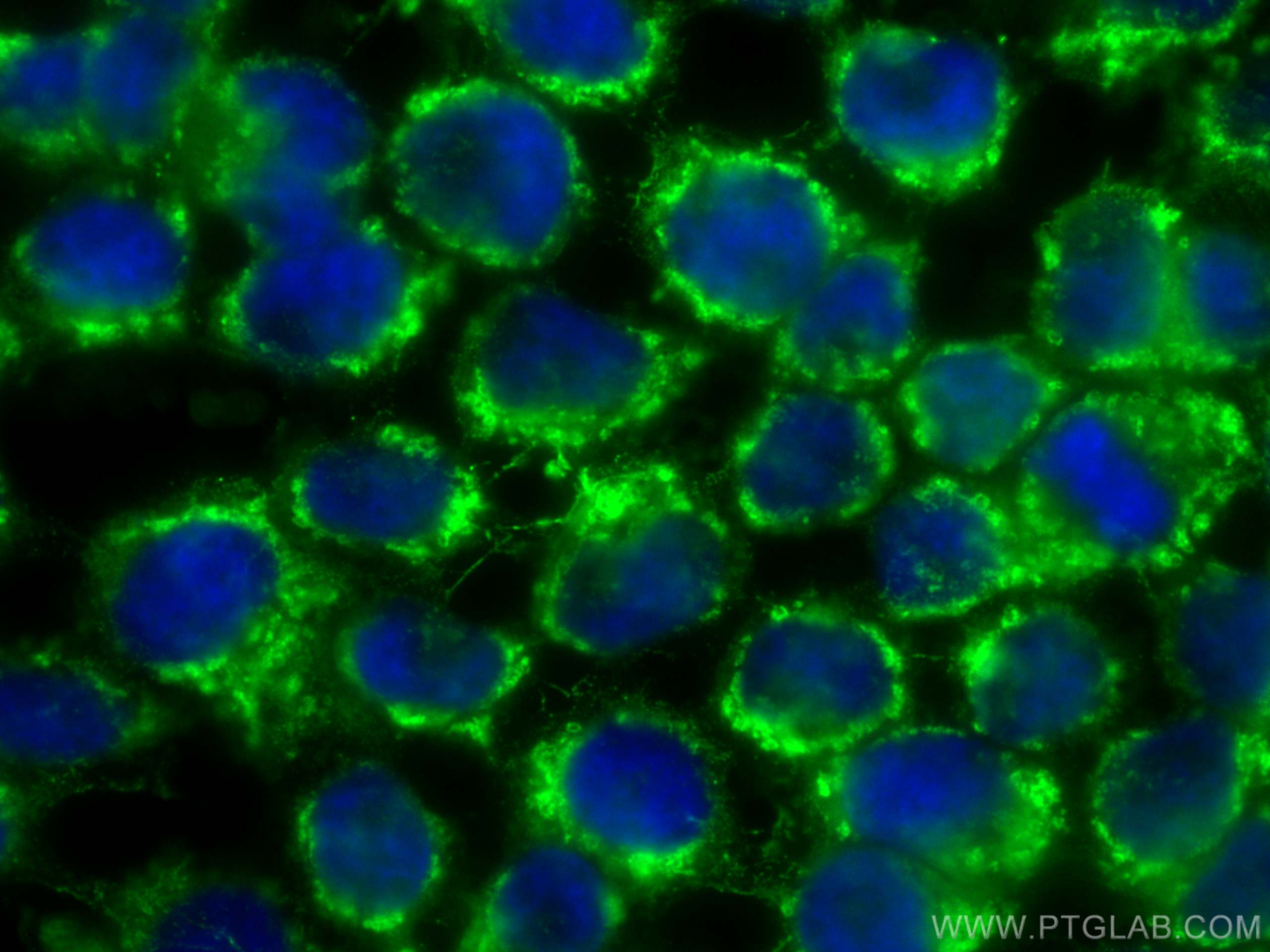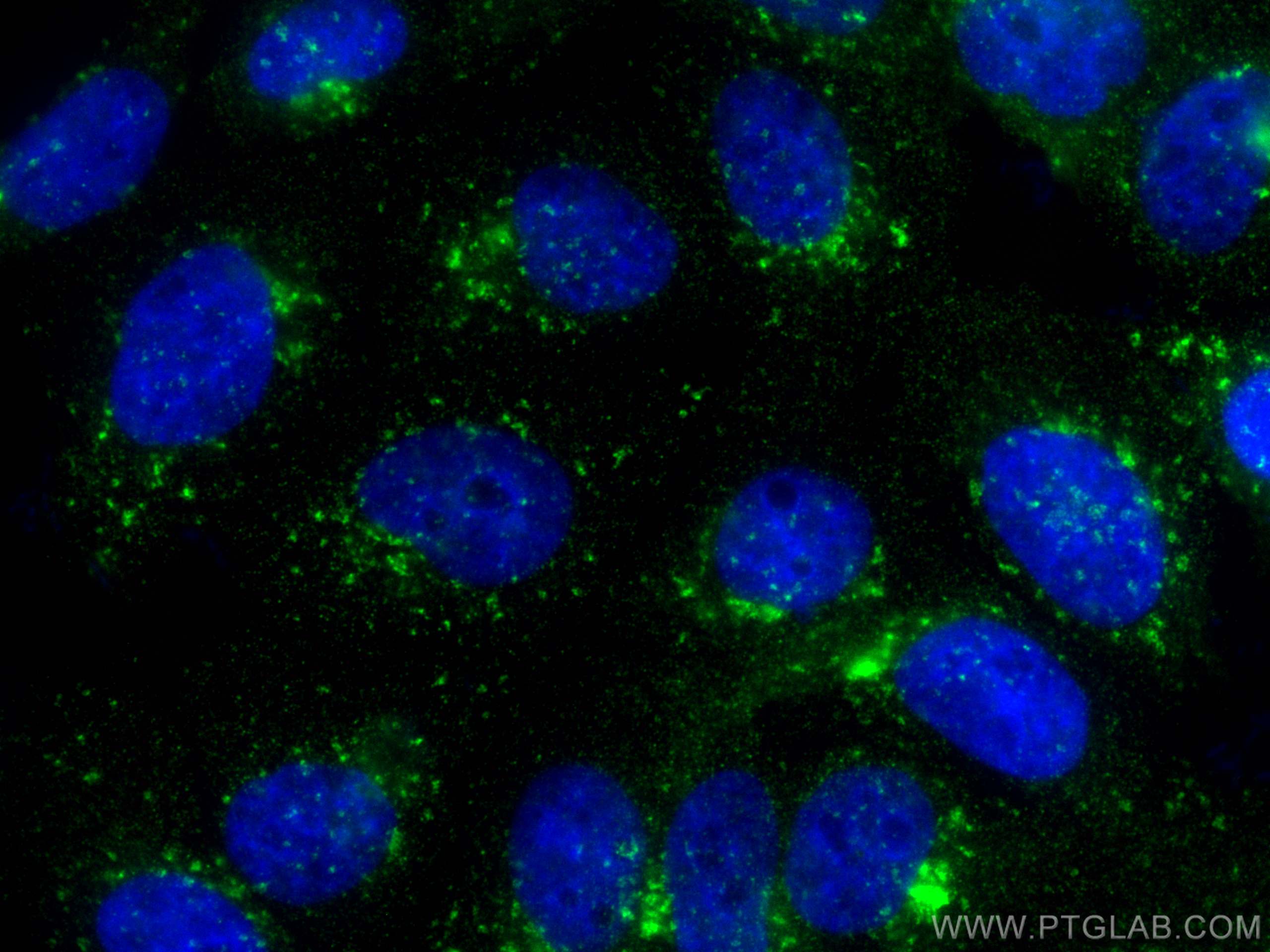Tested Applications
| Positive IF/ICC detected in | A431 cells |
Recommended dilution
| Application | Dilution |
|---|---|
| Immunofluorescence (IF)/ICC | IF/ICC : 1:50-1:500 |
| It is recommended that this reagent should be titrated in each testing system to obtain optimal results. | |
| Sample-dependent, Check data in validation data gallery. | |
Product Information
CL488-68292 targets SNX3 in IF/ICC applications and shows reactivity with Human, Mouse, Rat samples.
| Tested Reactivity | Human, Mouse, Rat |
| Host / Isotype | Mouse / IgG1 |
| Class | Monoclonal |
| Type | Antibody |
| Immunogen | SNX3 fusion protein Ag1160 Predict reactive species |
| Full Name | sorting nexin 3 |
| Calculated Molecular Weight | 19 kDa |
| Observed Molecular Weight | 16-20 kDa |
| GenBank Accession Number | BC008444 |
| Gene Symbol | SNX3 |
| Gene ID (NCBI) | 8724 |
| RRID | AB_3084467 |
| Conjugate | CoraLite® Plus 488 Fluorescent Dye |
| Excitation/Emission Maxima Wavelengths | 493 nm / 522 nm |
| Form | Liquid |
| Purification Method | Protein G purification |
| UNIPROT ID | O60493 |
| Storage Buffer | PBS with 50% Glycerol, 0.05% Proclin300, 0.5% BSA, pH 7.3. |
| Storage Conditions | Store at -20°C. Avoid exposure to light. Stable for one year after shipment. Aliquoting is unnecessary for -20oC storage. |
Background Information
SNX3 is a member of the sorting nexin family of proteins regulating membrane traffic. SNX3 regulates endosomal function through its PX (phox homology)-domain-mediated interaction with PtdIns(3)P (PMID: 11433298). It is a potential regulator of neurite formation and may play an important role in the development and function of the central nervous system (PMID: 19576982; 20817026).
Protocols
| Product Specific Protocols | |
|---|---|
| IF protocol for CL Plus 488 SNX3 antibody CL488-68292 | Download protocol |
| Standard Protocols | |
|---|---|
| Click here to view our Standard Protocols |





